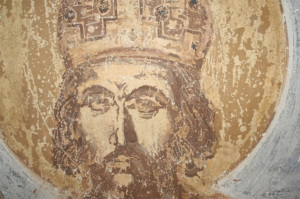Essentials of Church Revitalization: Revitalization Is About Being the Body of Christ (Pt. 2)
The real church is the body of Christ, and if the church is the body of Christ it ought to do what Jesus did in His incarnate body.
This is the fundamental principle of church revitalization.
If this truth is missing, attempts at revitalization will be nothing more than contrived strategies wrapped in clichés. Money will be spent, sweat poured out, even blood spilled, but at the end of the day all that is left is the same old weary institution with a new façade and fresh paint.
If revitalization is the recovery of vitality and vitality is the energy of life, the essential revitalization question is: What is the "life" we are attempting to recover? Answer this question wrong and revitalization becomes exhaustion, accelerated institutional entropy (the dissipation of energy), and heightened conflict.
I speak from experience, as I will detail in a moment.
The New Testament Greek word, bios, often refers to existence in the spacetime world. Existence is the key word here. Zoe most often signifies the God-quality of Being. His intention in creating humans as His image-bearers is that we would carry God's very life-qualities into the world.
Life-energy produces fruit, outcome. "Work out your salvation," writes Paul, in Philippians 2:12. "Your faith is proved by your works," says James 2:18. "Work, in biblical Greek, is ergon (think ergonomics) because work is the result of energy, and energy is inherent in life.
Therefore church revitalization is the recovery of the life-dynamic of Jesus Christ as its energizing power. Jesus says, "he who believes in Me, the works that I do, he will do also; and greater works than these he will do; because I go to the Father." (John 14:12)
The dead church has only the power of human flesh as its motivating force, producing dead works. This is the "bionic" church, having the appearance of life, but no living fruit. The bionic church is propped up by artificial life support, and artificiality results.
Life precedes fruit. When growth becomes the objective, flesh takes over, with all its pretense and delusion. The bionic church toils and exhausts itself trying to invent new gimmicks and spectacles that give the impression of life.
I learned this the hard way. In 1986, I was called simultaneously as pastor by two churches, one with 4,400 members, and the other – in Houston – with less than 200. Our family felt God leading us to Houston. In the early years we built by the Jesus Model described in this series. We understood the church as existing to minister His life and truth in our city. Attendance swelled from 125 to more than 1,000 in five years.
But then my vision changed. Growth was no longer a result of ministry, but the grand strategized objective. Programs replaced ministries, reputation pushed aside people, and vitality ebbed.
We needed a season to go back and discover what we had lost. Judgment must begin at the house of God (1 Peter 4:17), so this is self-assessment. Its sting spurs the desire and quest for revitalization. I had to accept that the problem began with me as senior leader, and my vision-shift.
The analysis of what went wrong begins by reconnecting with what Jesus did that was so right.
John says that "even the world itself" would not contain all the books that could be written about Jesus' deeds. (John 21:25) Thus I grouped all revealed in the Gospels about His earthly work under four broad categories: (1) First and foremost, Jesus worshipped; (2) Jesus proclaimed the Gospel of the Kingdom; (3) Jesus discipled those He reached; (4) Jesus served human need in the name of the Father.
These are the markers by which a church that has lost its vitality can begin recovering energy.
• What is the state of the congregation's worship, both corporately and personally?
• What is the "gospel" being preached? A message that prepares people to die, but with little focus on how to live as an ambassador of Christ's Kingdom in the world? A timid discourse or a compelling word with the ring of
"Thus saith the Lord"? A therapeutic feel-good gospel without the challenge of repentance and the necessity of the blood of Christ?
• What is the status of the church's discipleship ministries? Are people maturing spiritually in the Word of God? Are they being equipped to use their gifts to the building up of the body? Are they being taught to recognize and embrace Kingdom vision?
• How is the church carrying out the mission of serving human need in the name of Jesus? Does the church have a vision and practical strategies for visiting and ministering to the sick, the hungry, the thirsty, the imprisoned, of being a servant to its community and world?
These concerns are vital for the authentic church, from which I've learned so much. In more than 30 years working with churches in 22 nations, I have observed the common features of the real-deal. Whatever the denominational tag or location, here are four components I have noted of authentic churches (as measured by their fruit):
1. They are Jesus-centered. Jesus is their focus. They have no other task than functioning as His body where God has sovereignly placed them.
2. Authentic churches are Spirit-energized. They are acutely aware their work is "not by might nor by power, but by My Spirit, says the Lord of hosts." (Zechariah 4:6) They know only the Holy Spirit working through them can produce genuine fruit.
3. Real churches are Word-anchored. They are not locked into rigid form on the one hand, or the wildness of soulish frenzy on the other. They will do all authorized by the Scripture, but will not exceed biblically revealed practice and expression.
4. True churches are Kingdom-envisioning. Such churches know Kingdom ministry reaches into every sphere of human endeavor, and therefore all institutions and points of engagements are arenas for mission.
How did Jesus do all this? That's what we examine in Part 3.





























